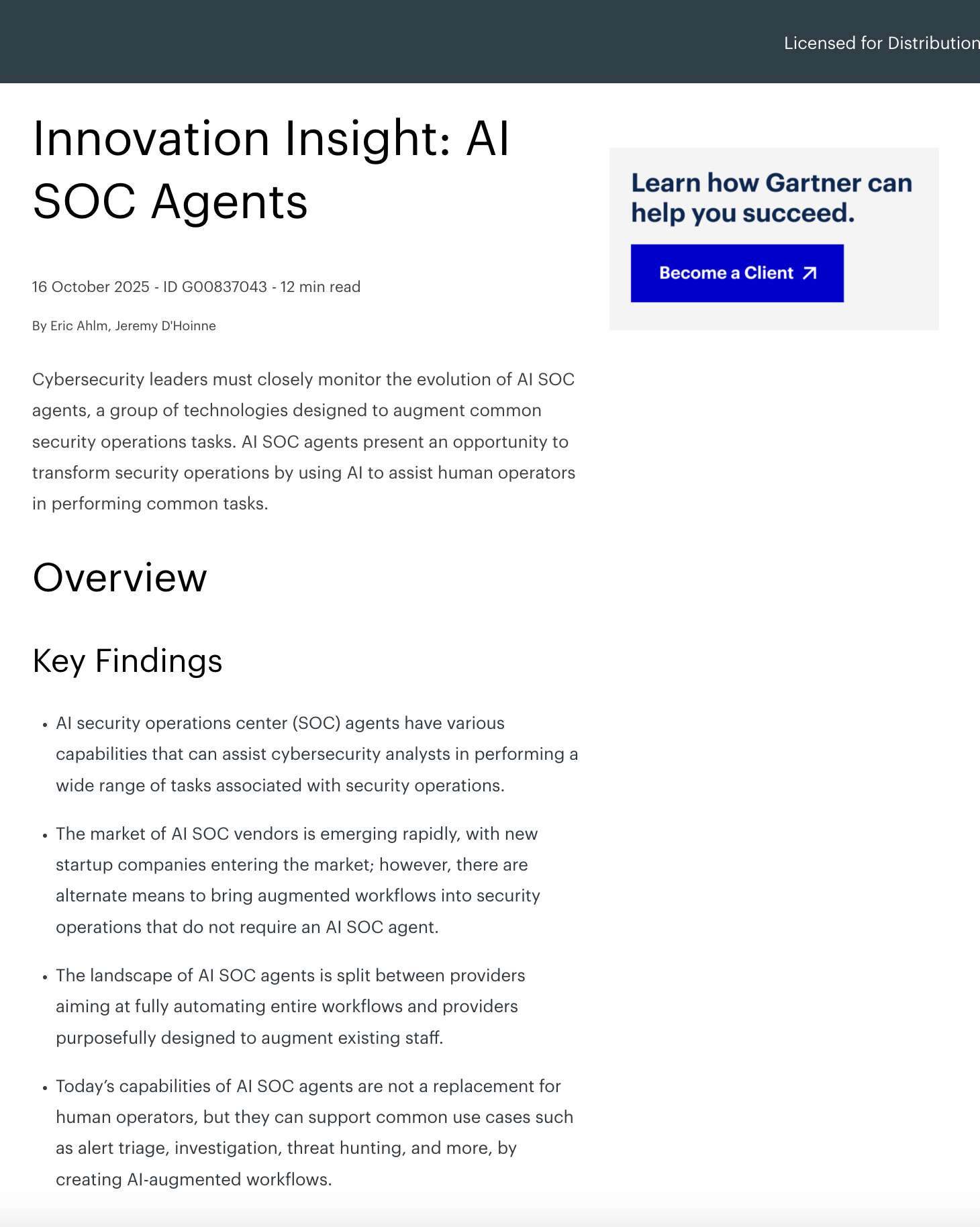
-min.webp)
Alert tuning (or detection tuning) has been one of the primary ways for managing the high volume of alerts that detections generate. Despite these efforts, the modern Security Operations Center (SOC) remains overwhelmed by volume.
A typical Level 1 analyst logs in to find hundreds of unread alerts generated overnight, a number that quickly grows throughout the day. Investigating these alerts is a time-consuming, manual process. For example, a "Suspicious PowerShell Execution" alert often requires an analyst to spend ten minutes cross-referencing multiple security tools, checking IP reputation, and verifying user identity against Active Directory.
The frequent result is a benign activity flagged as a potential threat, such as an IT admin running a scheduled maintenance script, which must then be manually closed. Alert tuning has been the go-to standard to fix this, but the problem remains.
While necessary, alert tuning is an insufficient Sisyphean task. It is manual, reactive, and endless. It’s also a blunt instrument. By tuning out noise based on static rules, we risk tuning out the subtle signals of a genuine, living-off-the-land attack.
It’s time to admit that we cannot tune our way out of this problem. To beat alert fatigue, we need to move beyond tweaking static detection rules and embrace dynamic, AI-driven investigation centered on rich context.
{{ebook-cta}}
The fundamental flaw with traditional alert tuning is that it relies on rigid logic applied to fluid situations. A SIEM rule looks at an event in isolation: Did User X log in from a new country? Yes -> Alert.
A human analyst, however, looks at context. Did User X log in from a new country? Yes. But wait; HR records show User X is on vacation in that country, and they are using their corporate-issued laptop with a compliant EDR status.
The human analyst instantly recognizes this as benign. The SIEM rule, lacking that context, screams "compromise."
Tuning attempts to bridge this gap by adding exceptions to the rule. In reality, business environments change faster than tuning can keep up. New applications, remote work shifts, and cloud migrations render yesterday’s tuning obsolete today.
The burden placed on human analysts to supply the missing context for thousands of low-fidelity alerts is unsustainable. It leads to burnout, high turnover, and the terrifying possibility that a real threat is buried in the noise of a thousand false alarms.
Furthermore, every exception creates a potential blind spot. Attackers know this. They thrive in the "allowed" gray areas of tuned rules.
The solution is smarter investigation of those alerts before they ever reach a human screen. This is where generative AI and autonomous AI SOC agents are changing the game.
Instead of tweaking thresholds to match the team capacity at the expense of coverage, an AI-driven system can autonomously investigate every alert same way a human Tier 1 analyst would, but at machine speed and without the same capacity constraints that require careful tuning.
At Prophet Security, we believe the future of the SOC relies on AI that eliminates the human attention constraint. Currently, this bottleneck traps resources in detection tuning and limits coverage without solving the root problems. Moving from simple correlation to complex causality, AI SOC agents take an initial alert and immediately begin gathering rich context:
By automatically querying disparate security tools (EDR, Identity Providers, Cloud platforms, and Network logs) the AI agent builds a comprehensive picture of the event.
Once this rich context is gathered, the AI performs careful lines of reasoning based on the same questions an expert human analyst would ask.
Traditional rules struggle with nuance. AI models, trained on vast datasets of security events and human analyst decisions, excel at it. The AI can weigh conflicting evidence. It understands that a "suspicious" command executed by a verified admin during a change window is drastically different from the same command executed at 3 AM by a marketing intern’s compromised credentials.
By synthesizing context, the AI can confidently classify an alert as a false positive and auto-close it, providing a clear audit trail of its reasoning. Alternatively, if the context suggests a genuine threat, the AI escalates it to a human analyst as a fully pre-investigated incident dossier with a recommended course of action.
Moving beyond alert tuning to AI-driven contextual investigation delivers the outcome every SOC manager dreams of: an environment where benign alerts are handled by only by AI, allowing analysts to focus entirely on genuine attacks.
It means analysts stop spending 80% of their day chasing down benign alerts. It liberates them from the repetitive drudgery of data gathering so they can focus on high-value tasks like threat hunting, incident response strategy, and proactive security engineering.
Alert fatigue and capacity constraints isn't an inevitable consequence of cybersecurity. It’s a symptom of outdated tools. By leveraging AI to handle the heavy lifting of contextual investigation, we can finally turn down the noise and turn up the focus on real threats.
Get Gartner's guidance on evaluating and adopting AI SOC agents

